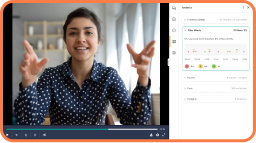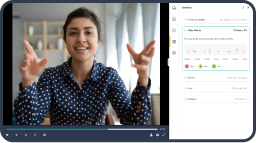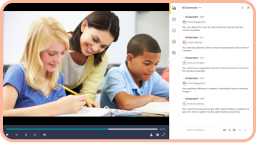If your classes have a presentation component, then you know just how nerve-wracking presenting can be for your students. Even normally outgoing and relaxed people can freeze up in front of a crowd, and for some students this anxiety is completely debilitating, erasing their presentation skills altogether.
Is there anything to be done for those particularly unlucky souls?
Well if you’re asking this question, you aren’t the only one. In fact, many researchers are trying to better understand presentation anxiety so they can help students overcome it. A study from Dublin City University discovered that presentation anxiety—also known as oral communication apprehension (OCA)—is caused by three main factors in a student: fear of humiliation in front of their peers, negative past experiences with presenting, and insufficient preparation. These researchers spent hours interviewing students about what exactly makes them so nervous. Without fail their fears always stemmed from those three sources.
But students with high levels of OCA aren’t a lost cause. The Dublin study also found that anxious students who received positive feedback from their instructor and peers consistently experienced a drop in their average anxiety levels over time. Even if they’re naturally afraid of presenting or have had bad experiences in the past, positive words and experiences do eventually build confidence and better presenting skills.
In another fascinating study on communication apprehension, two researchers found another compelling factor that reduces anxiety in student presenters: video. As it turns out, recording presentations digitally and allowing students to review their performance in hindsight greatly improves presenting skills while also reducing anxiety over time. This was true even if the recording aspect increased their anxiety levels initially.
The researchers were unsure why exactly video was such a great anxiety-reducer. Maybe it was the familiar ritual of recording each presentation. Or maybe it was the heightened self-awareness that led to greater confidence and less fear. The important takeaway is that the videotape-and-critique method is a staggeringly effective way for students to become better presenters. Other studies also found that recording video increases the quality of student performance in general.
So if you’re looking for the best ways to help students become fearless, here are three methods guaranteed to help:
1. Focus on Positive Feedback
To help students see presenting as a positive learning experience, you absolutely must share what they’re doing right along with what they can improve. Students need confidence in their abilities to motivate them to reach to new heights. It’s up to you as the instructor to make sure that peer critique also follows this pattern. Keeps the discussion positive, constructive, and useful.
2. Coach Students on How to Prepare
Understandably, students will be more nervous for a presentation that they aren’t ready to deliver. A boat-load of research has proven that practice lowers anxiety and increases quality, so drill into your students just how many times they should run through their material. Make sure that they’re practicing long enough to feel comfortable with both their subject matter and their delivery.
3. Use GoReact
If you’re looking for an easy way to use video to your advantage, GoReact is the answer. By watching themselves present on screen and getting time-coded feedback directly from you, students can raise their self-awareness and hone their presenter skills simultaneously. GoReact is also a great tool for instructors to model positive feedback for students and moderate peer comments before showing them to presenters. It’s a win-win for everyone.
Check out How to Build a Successful Presentation Structure for more helpful presentation tips.






